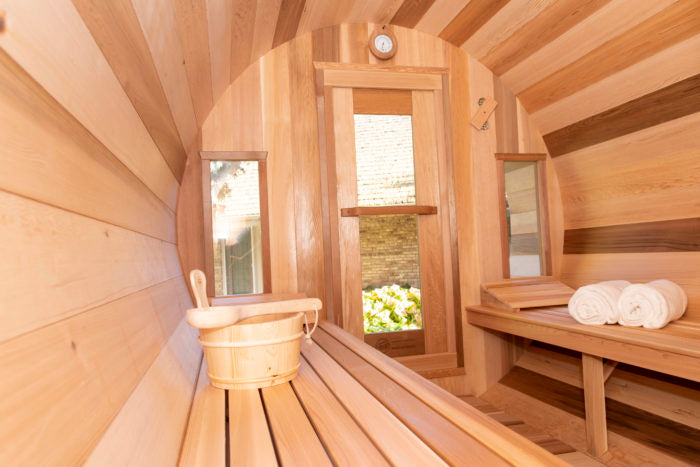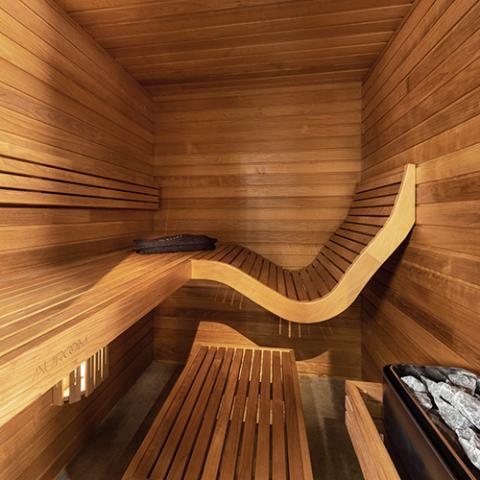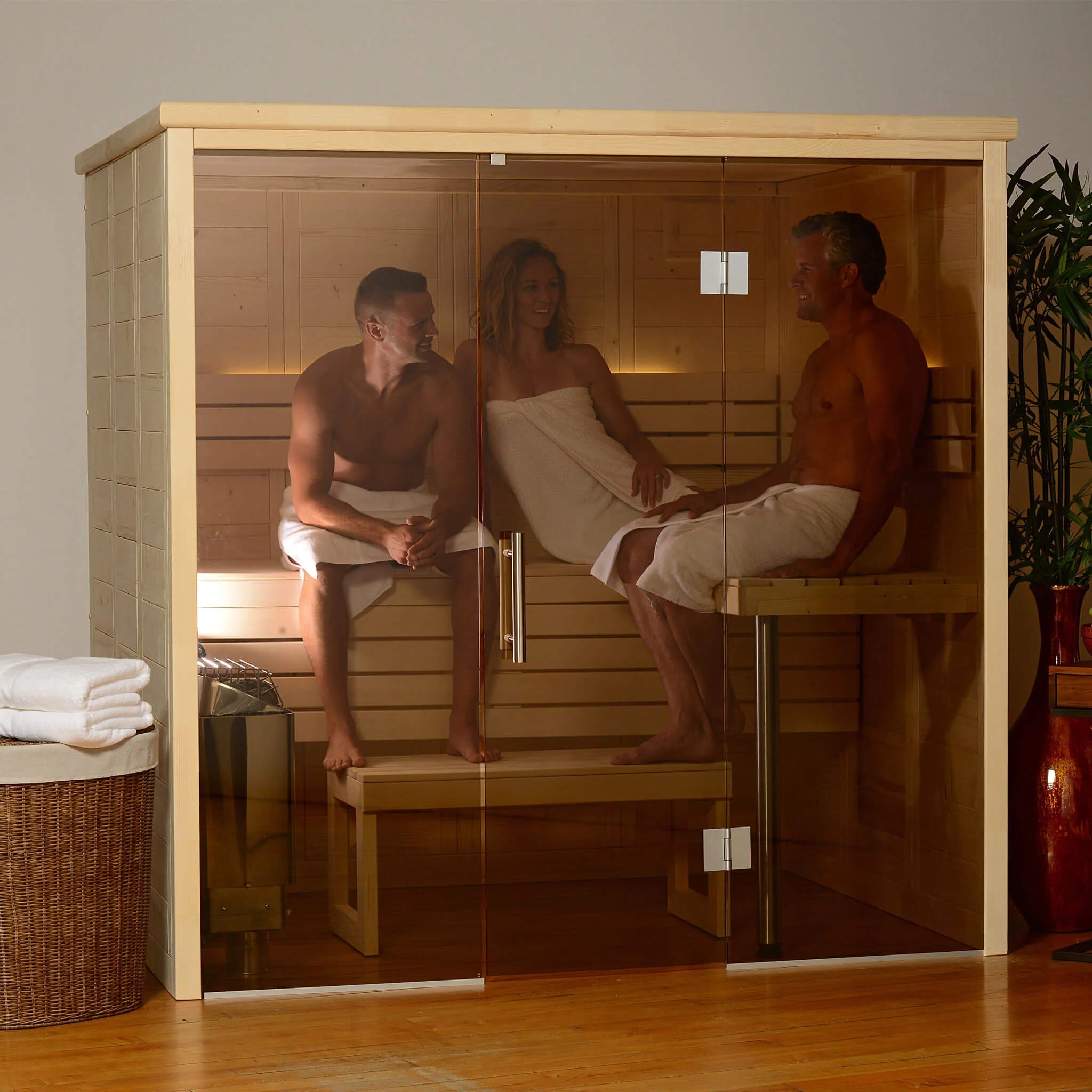The Ultimate Guide To Traditional Sauna
What Does Traditional Sauna Mean?
Table of ContentsA Biased View of Traditional SaunaGet This Report on Traditional SaunaThe 10-Second Trick For Traditional SaunaGetting The Traditional Sauna To WorkThe Facts About Traditional Sauna Uncovered
Most of the weight lost in a sauna is water loss and is re-gained upon rehydrating. Without a doubt sauna can be a vital component of a healthy weight loss program. To look at the distinctions between typical and IR saunas, I will certainly separate these right into proven, theoretical, and made differences.Thus, the best point in the saunawhich goes to the ceiling straight over the sauna heateris normally in between 185 and 190 F. Claims that a standard sauna exceeds 200 F is just not true and not applicable for electrical saunas sold in the United States. The temperature for a far-infrared sauna is normally established between 120 and 140 F; however, unlike the conventional sauna, the goal in and IR space is not to achieve a heat.
Since of this, the temperature distinction is almost irrelevant, since excessive sweating causes both sauna types, however the technique of warming the body is different. In an IR sauna the bather will really feel hot and will sweat a lot, however at a lot lower temperature levels (Traditional Sauna). Therefore, if the goal is to invest longer periods of time in the sauna, the IR sauna is an excellent choice
When a traditional sauna has been appropriately warmed, the sauna walls are warm, the air temperature has actually accomplished set temperature level and the rocks are super warmed. As an intriguing side note, the warmed walls and the rocks are sending out far-infrared warmth, incorporated with the heated air, to develop an "covering warm".
The 6-Second Trick For Traditional Sauna

When the heat is achieved, the components cycle on and off to keep the heat. Many standard sauna individuals enjoy pouring water over the rocks to produce vapor to increase sauna moisture degrees. The benefits of putting water over the rocks consist of: making the space a lot more comfortable, dampening the nasal passages, and permitting the usage of aromatherapy by mixing important oils with the water.

When the power enters the body, it causes the body temperature to raise and inevitably causes sweat. In an infrared sauna it is very important for the emitters/heaters to stay on practically continuously. Considering that there is no mass of rocks to preserve warmth, the sauna will certainly cool if the emitters closed off.
As discussed above, the sauna bather in an infrared room wants to position himself before operating emitters to obtain maximum take advantage of the warm. The home heating time for both spaces can be very different, depending upon how the areas are utilized. For a standard sauna, a bather must allow 30-40 minutes for the area to accomplish a wanted temperature level and to properly pre-heat the rocks.
8 Easy Facts About Traditional Sauna Explained
A well built sauna will generally accomplish a temperature level of 150-160 F in about 30-40 mins. For hotter temperature levels, the area may require to heat for a longer duration. As soon as the click site area attains established temperature level, the heater will cycle on and off, typically operating about 50% of the time. The shielded walls and the heated rocks will maintain the space warm and at stable temperatures.

Typical saunas often tend to be larger (hence make use of more electricity) than infrared saunas, although standard saunas are absolutely available in one and 2 person dimensions as well. For a two-person conventional sauna, 5x6 or 5x7 size is most prominent. The leading bench can easily seat two or 3 individuals and is additionally long sufficient to lie down during the sauna session.
Rumored Buzz on Traditional Sauna
The average expense per kWH of power in the united state is around $0.11, so a 4.5 kW heating system will certainly cost around $.50 to compete one hour, if the heater runs continuously for one hour. Typically a sauna heater will run for 75% of the very first hour and 50% of subsequent hours on since the elements cycle once the established temperature is achieved.

There is a hardly ever gone over difference in the social experience in between the two rooms. While our society has lost several of the social benefit of the traditional sauna experience, it can be very socially gratifying (Traditional Sauna). From family time in the sauna, to heart-felt discussions with better halves, to sauna partiesthe conventional sauna experience can lead to intimate interacting socially
The 7-Minute Rule for Traditional Sauna
Many greater end infrared this contact form rooms consist of tinted light treatment, sound systems and full-glass fronts.